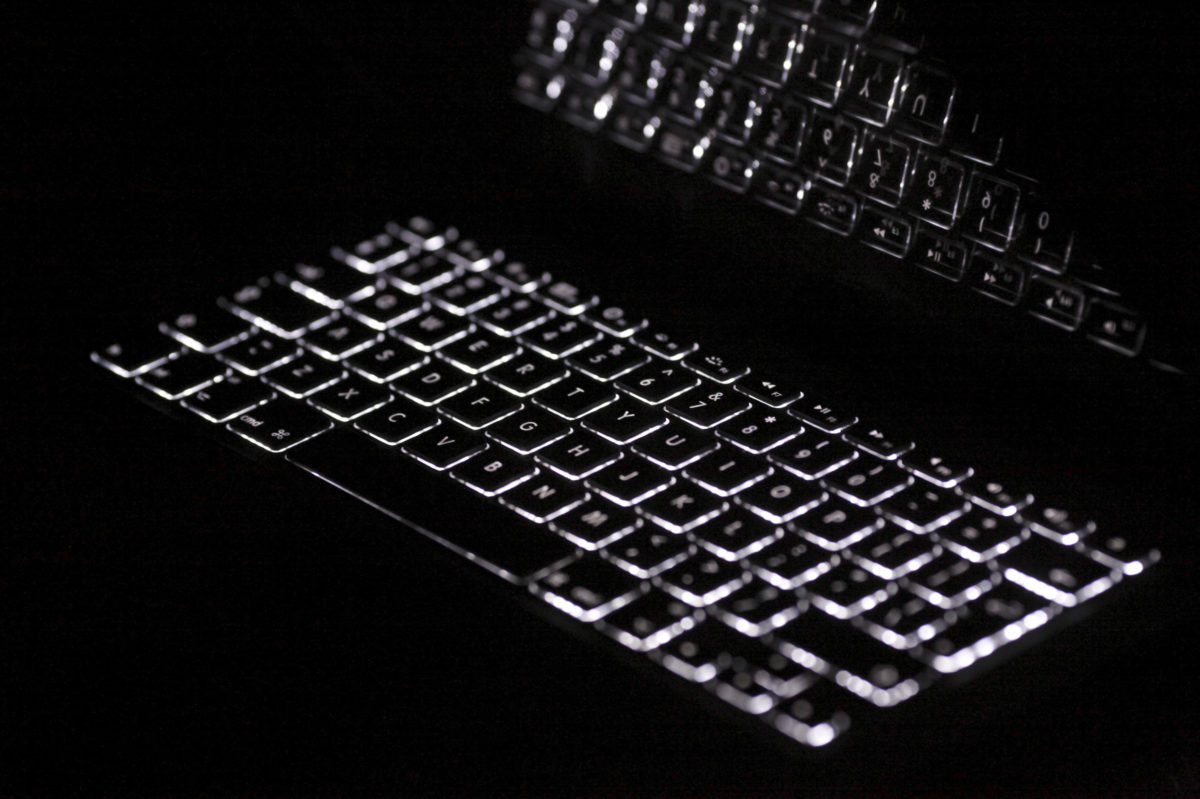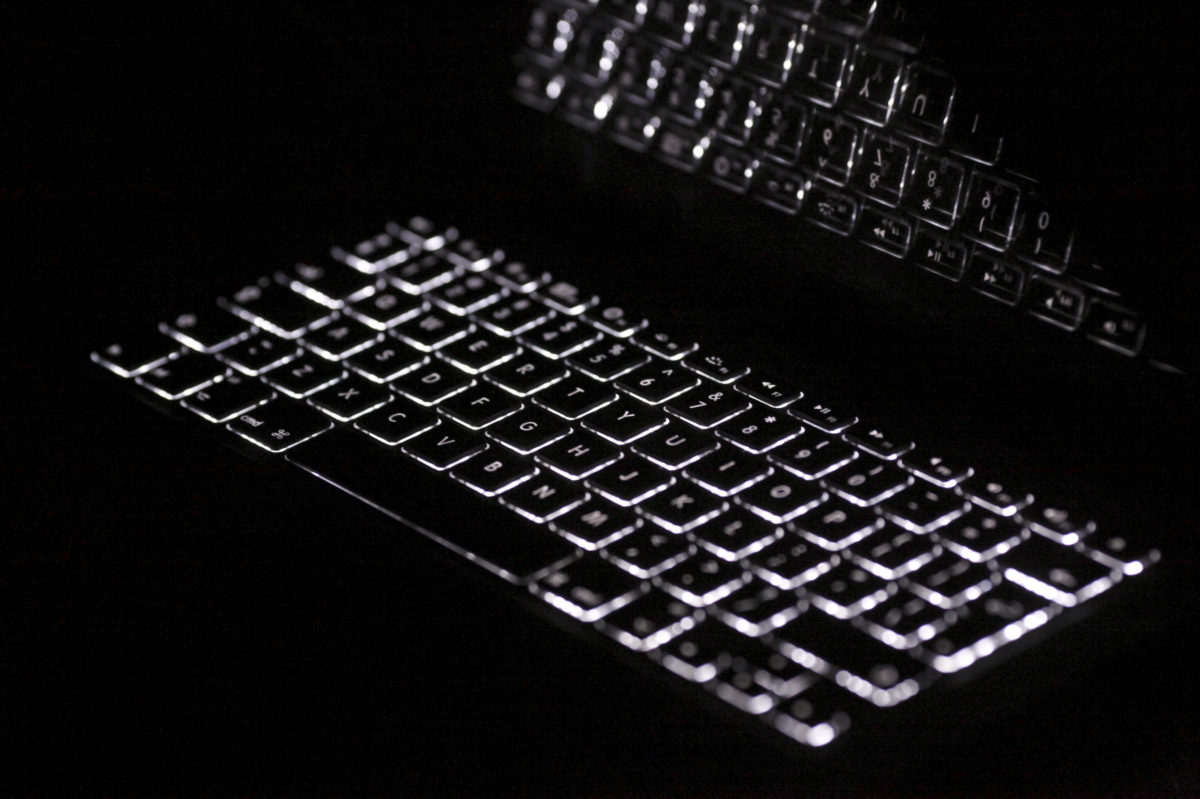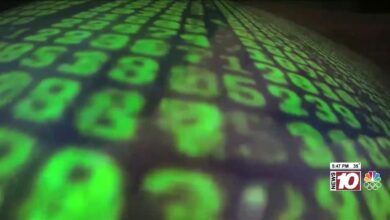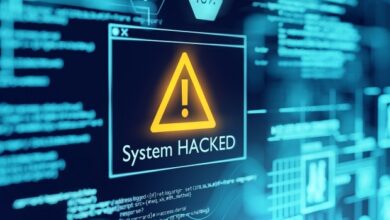Spyware Targeted at Congressional Hearings A Threat Assessment
Spyware targeted at congressional hearings poses a serious threat to the integrity of our democratic processes. These covert attacks aim to disrupt, influence, and ultimately compromise the very essence of legislative investigations. From gathering sensitive information to manipulating witness testimonies, the potential damage is significant. This in-depth look will explore the various types of spyware, potential impacts on hearings, and strategies for detection and prevention.
Congressional hearings are crucial for oversight and accountability. They provide a platform for examining issues of public concern and ensuring transparency in government operations. However, the increasing sophistication of spyware poses a novel threat to these vital processes. We’ll examine the specific vulnerabilities in these hearings and the techniques used by attackers to deploy and maintain their spyware, ultimately impacting the public’s trust in the legislative process.
Introduction to Congressional Hearings and Surveillance
Congressional hearings are formal investigations conducted by committees of the United States Congress. These hearings serve a crucial function in the legislative process, enabling scrutiny of government agencies, policies, and individuals. Their purpose extends beyond simple fact-finding; hearings also play a role in shaping public opinion, influencing legislation, and holding accountable those entrusted with public power. The procedures involved are often highly structured, with specific rules and guidelines to ensure fairness and transparency.The procedures for conducting congressional hearings are designed to be thorough and impartial, often involving testimony from witnesses, presentations of documents, and cross-examination.
This rigorous process is intended to shed light on complex issues and inform legislative decisions. The nature of the hearing type significantly influences the manner in which the hearing is conducted. Understanding the different types and their typical formats is vital to appreciating the overall process.
Types of Congressional Hearings
Congressional hearings encompass a diverse range of types, each with a distinct purpose and format. Committee hearings are typically held to gather information, analyze issues, and develop recommendations for future legislation or policy changes. Confirmation hearings are specifically designed to assess the qualifications and suitability of nominees for federal positions. Oversight hearings are crucial in evaluating the performance of government agencies and ensuring compliance with laws.
Impeachment hearings, while rare, are among the most serious, involving the investigation and potential removal of an elected official from office.
Role of Intelligence Gathering in Congressional Oversight
Intelligence gathering, often performed by government agencies, plays a vital role in congressional oversight. Information gathered can be crucial in evaluating the effectiveness of policies, identifying potential threats, and ensuring accountability within government. The collection and analysis of intelligence must be carefully managed to ensure compliance with legal frameworks and protect privacy rights. Intelligence obtained through surveillance may be relevant in investigating possible wrongdoing, corruption, or threats to national security.
Legal Framework and Surveillance
The legal framework surrounding surveillance activities is complex and often subject to congressional oversight. The Fourth Amendment to the United States Constitution protects against unreasonable searches and seizures, while laws such as the Foreign Intelligence Surveillance Act (FISA) govern certain types of surveillance. The use of surveillance in congressional investigations must adhere to these legal limitations and be demonstrably justified in terms of the purpose of the investigation.
Balancing national security concerns with constitutional rights is a significant challenge in this area. The legal framework must always be carefully considered to ensure due process and prevent abuses of power.
Historical Examples of Surveillance Impacting Congressional Hearings
Historically, various instances exist where surveillance activities have intersected with congressional hearings. The Watergate scandal, for example, involved extensive surveillance operations that eventually led to congressional hearings and investigations. These investigations ultimately contributed to the impeachment proceedings. Other examples may involve the monitoring of suspected foreign agents or organized crime figures, and these situations often require sensitive handling and meticulous legal review.
Surveillance and Congressional Hearings: A Table
| Hearing Type | Purpose | Potential for Surveillance | Legal Basis |
|---|---|---|---|
| Committee Hearing | Gather information, analyze issues, develop recommendations. | Limited, typically focused on public records. | General oversight authority, relevant statutes. |
| Confirmation Hearing | Assess nominee qualifications. | Limited, background checks and public information. | Relevant statutes and Senate rules. |
| Oversight Hearing | Evaluate agency performance. | Potentially higher, depending on investigation. | Relevant statutes and oversight authority. |
| Impeachment Hearing | Investigation and potential removal of an official. | Potentially significant, with stringent legal requirements. | Constitutional grounds, relevant statutes. |
Types of Spyware Targeting Hearings
Spyware, often designed for covert data collection, poses a significant threat to the integrity and fairness of congressional hearings. These malicious programs can compromise sensitive information, potentially influencing the outcome of discussions or even disrupting the proceedings themselves. Understanding the various types of spyware and their capabilities is crucial for identifying and mitigating these threats.
Spyware Functionality and Capabilities
Spyware targeting hearings can vary in sophistication and functionality, from simple keyloggers to sophisticated remote access tools. Keyloggers record keystrokes, capturing sensitive information like passwords, personal details, and potentially classified material. More advanced spyware can record audio and video, enabling attackers to monitor conversations and proceedings in real-time. This can include capturing not only spoken words but also the context of the hearing room, such as gestures and facial expressions.
Remote access tools provide complete control over a target system, enabling attackers to manipulate data, install additional malware, or even disrupt the hearing’s flow. Furthermore, spyware can be designed to exfiltrate data from the compromised system, allowing attackers to study and analyze the hearing’s content and participants’ opinions.
Methods of Deployment and Maintenance
Attackers employ various methods to deploy and maintain spyware on systems used during hearings. These methods can range from exploiting vulnerabilities in software used for presentations and communication platforms to physically inserting malware onto devices. Social engineering, such as phishing emails or fraudulent websites, is another tactic. Furthermore, attackers might leverage compromised accounts to gain access to networks and install spyware remotely.
Maintaining access often involves using sophisticated techniques like steganography, hiding spyware within seemingly harmless files or applications. These techniques make it challenging for security personnel to detect and remove the malicious software. The continuous nature of the threat requires constant monitoring and vigilance to detect and prevent any intrusions.
Categorization of Spyware Types
| Spyware Type | Functionality | Target | Delivery Method |
|---|---|---|---|
| Keylogger | Records keystrokes, capturing passwords, usernames, and sensitive information. | Computers, laptops, mobile devices used by participants. | Malicious software installation, phishing emails, infected USB drives. |
| Screen Recorder | Captures screen activity, including audio and video. | Computers, laptops used for presentations or discussions. | Software exploits, compromised accounts, malicious plugins. |
| Remote Access Trojan (RAT) | Provides remote control over the compromised system. Allows attackers to install additional malware, steal data, and disrupt operations. | Computers, networks used for hearing proceedings. | Vulnerable software, infected websites, social engineering. |
| Data Exfiltration Tools | Transfers data from the compromised system to a remote location controlled by the attacker. | Servers, databases, storage devices. | Malware disguised as legitimate software, compromised network connections. |
Disrupting or Influencing a Hearing
Spyware can be used to disrupt or influence a hearing in various ways. For instance, attackers could use keyloggers to steal sensitive information or screen recorders to capture private conversations. A RAT could allow attackers to manipulate data presented during the hearing or even disrupt the proceedings by altering presentations or communications. Data exfiltration tools could provide attackers with the ability to gain insights into the strategies and arguments being used by individuals or groups involved in the hearing.
The potential impact is significant and underscores the importance of robust security measures during such events.
Technical Aspects Relevant to Hearing Investigations
Technical investigations into spyware use during hearings should focus on the specific software used, its vulnerabilities, and the methods used for installation and maintenance. Analysis of network traffic patterns, system logs, and file metadata can reveal evidence of malicious activity. Forensic examination of devices used by participants and staff is essential. Moreover, understanding the specific techniques employed by attackers, such as zero-day exploits or social engineering, is critical to identifying the scope of the intrusion.
This analysis can help determine how attackers gained access, what data they accessed, and how to prevent similar attacks in the future.
Vulnerabilities in Hearing Systems
Congressional hearings frequently rely on a combination of systems, each presenting potential vulnerabilities. These systems include presentation software, communication platforms, and network infrastructure. Outdated software, weak passwords, or insufficient security measures on these platforms could allow attackers to exploit vulnerabilities and deploy spyware. Lack of multi-factor authentication and inadequate network segmentation can also create entry points for attackers.
Poorly configured firewalls and inadequate intrusion detection systems can further expose the hearing to potential threats. Addressing these vulnerabilities is crucial for safeguarding the integrity and confidentiality of congressional hearings.
The spyware targeting congressional hearings is a serious concern, highlighting the vulnerability of our political process. It’s a reminder of the constant threat of malicious actors in the digital space. Interestingly, around the same time, Napster 2.0 went live, kicking off a fierce battle with iTunes, a digital music revolution that, in retrospect, seems almost quaint compared to the sophisticated cyberattacks of today.
This just emphasizes how the digital landscape evolves, with old and new threats emerging alongside each other, making security a constantly evolving battle.
Potential Impacts on Hearings

Spyware targeting congressional hearings poses a significant threat to the integrity and fairness of the legislative process. Its insidious nature allows for the clandestine manipulation of testimony, evidence, and the very atmosphere of the proceedings. This can erode public trust, damage reputations, and even influence the outcomes of crucial debates. The potential consequences are far-reaching and require careful consideration.
Negative Impacts on Hearing Integrity
The deployment of spyware in a congressional hearing can severely compromise the objectivity and reliability of the proceedings. Evidence presented by witnesses could be tampered with, their testimony potentially coerced or fabricated, creating a distorted picture of the issues under discussion. The deliberate introduction of false or misleading information undermines the hearing’s fundamental purpose: to gather accurate information and formulate sound policy decisions.
The recent spyware targeting congressional hearings is deeply concerning. It highlights a worrying trend of sophisticated cyberattacks aimed at undermining democratic processes. Fortunately, there are proactive steps being taken to improve network security. For instance, the IBM and Cisco team are working on a new standard for self-healing networks, which could help mitigate these types of threats by making networks more resilient to attacks.
This focus on enhanced network security, exemplified by the efforts of the IBM Cisco team on standard for self healing networks , could be a crucial step forward in protecting our systems from malicious actors and ensuring the integrity of future hearings. Ultimately, though, the spyware issue demands urgent attention and further development in these areas.
The very foundation of trust upon which the legislative process rests is at risk.
Compromised Witness Testimony and Evidence
Spyware can directly compromise witness testimony by monitoring and recording their communications before, during, and after the hearing. This includes emails, phone calls, and personal meetings. Access to these communications can be used to influence the witness’s statements, potentially forcing them to provide testimony that aligns with the interests of those deploying the spyware, rather than reflecting their true knowledge and understanding.
Similarly, spyware can be used to manipulate evidence presented during the hearing, potentially forging documents or altering data to favor a particular narrative.
Implications for Public Trust
The use of spyware in congressional hearings directly impacts public trust in the legislative process. If the public perceives that hearings are subject to manipulation and coercion, their confidence in the integrity of the lawmakers and the system itself will erode. This erosion of trust can have significant long-term consequences, making it more difficult to enact necessary reforms and policies.
Cases where leaked or compromised documents have revealed political interference in investigations, or attempts to sway the public opinion on important issues, demonstrate the tangible impact of such actions.
Effects on Reputation
The deployment of spyware in congressional hearings has significant repercussions on the reputations of the individuals and institutions involved. Such actions create a climate of suspicion and distrust. Legislators whose hearings are targeted might face accusations of corruption or improper conduct, potentially harming their credibility and political standing. Similarly, the institutions overseeing these hearings may be viewed as complicit or vulnerable, losing public support.
Potential for Influencing Hearing Outcomes
The use of spyware can directly influence the outcome of a hearing by manipulating the information presented. If witnesses are coerced or intimidated, the hearing’s ability to reach sound conclusions is compromised. The manipulated evidence and testimony can sway public opinion and potentially affect the final decisions made by policymakers. This manipulation can have far-reaching consequences, affecting the lives of countless citizens.
Potential Impacts on Different Hearing Stages
| Hearing Stage | Impact | Mitigation Strategies |
|---|---|---|
| Pre-hearing | Spyware can be used to gather intelligence on witnesses, influence their testimony, and potentially compromise evidence before the hearing even begins. | Enhanced security measures for witnesses, increased vigilance regarding potential threats, and the use of secure communication channels. |
| During the hearing | Spyware can compromise witness testimony, alter evidence, and create a climate of fear and distrust, potentially influencing the course of the proceedings. | Real-time monitoring for suspicious activity, robust security measures to protect evidence, and the implementation of clear procedures for handling potential security breaches. |
| Post-hearing | Spyware can be used to influence public opinion through the dissemination of manipulated information, thereby potentially impacting the hearing’s outcomes and long-term implications. | Independent verification of evidence, public awareness campaigns regarding the risks of spyware, and the establishment of mechanisms for handling potential misinformation. |
Methods of Detection and Prevention
Protecting congressional hearings from spyware requires a multi-layered approach that combines proactive prevention strategies with robust detection mechanisms. Effective measures must consider the diverse methods of spyware deployment and the evolving tactics of malicious actors. This is crucial to maintaining the integrity and security of the legislative process.
Spyware Detection Methods
Detection of spyware necessitates a combination of technical tools and human intelligence. Sophisticated monitoring systems are critical in identifying unusual network traffic patterns, file modifications, or unauthorized access attempts. Regular security audits and penetration testing can uncover vulnerabilities and potential entry points for spyware. Employee training programs can help raise awareness about phishing scams and other social engineering techniques employed by malicious actors to gain access to sensitive data.
| Method | Description | Effectiveness |
|---|---|---|
| Network Intrusion Detection Systems (NIDS) | These systems monitor network traffic for suspicious patterns indicative of malicious activity, such as unusual data transfers or attempts to exploit vulnerabilities. | High, but reliant on up-to-date signatures and thorough configuration. |
| Antivirus and Anti-malware Software | These tools scan files and processes for known malware signatures and suspicious behavior. | Moderate, effectiveness depends on the signature database’s comprehensiveness and the sophistication of the spyware. |
| Behavioral Monitoring Tools | These tools analyze system activity for deviations from normal patterns, such as unusual file access or process creation. | High, particularly for detecting zero-day exploits or previously unknown spyware. |
| Security Information and Event Management (SIEM) Systems | These systems collect and analyze security logs from various sources to identify patterns and anomalies. | High, provides a comprehensive view of security events and enables proactive threat response. |
Preventative Procedures for Hearings
Comprehensive security measures must be implemented before, during, and after a congressional hearing. This proactive approach minimizes the risk of compromise and strengthens the overall security posture.
- Pre-hearing Security Measures: These involve securing the hearing room and the surrounding area, implementing access controls for personnel and visitors, and conducting thorough security assessments of all devices and systems used in the hearing. Pre-hearing network scans and vulnerability assessments are vital to identify potential weaknesses and mitigate risks before the hearing begins.
- During-hearing Security Measures: Continuous monitoring of network traffic and system activity is essential during the hearing. Employing robust encryption protocols and limiting access to sensitive data are crucial during the session. Strict adherence to established security protocols by all participants is mandatory.
- Post-hearing Security Measures: Immediate review of all security logs and activity reports to identify any unusual occurrences is essential. This review is crucial to analyze potential breaches or security incidents after the hearing. Thorough data sanitization and removal of any sensitive data from devices and systems are critical steps in ensuring the protection of information.
Secure Network Infrastructure
A secure network infrastructure is paramount to prevent spyware attacks. A robust network architecture, with firewalls, intrusion detection systems, and secure access controls, acts as the first line of defense. This prevents unauthorized access to sensitive data and limits the potential damage from malicious activity. A properly configured network, including robust encryption and access controls, significantly reduces the risk of compromise.
Security Measures Examples
Examples of security measures include using strong passwords, enabling two-factor authentication, and regularly updating software and operating systems. Implementing robust encryption protocols for all data transmission and storage is also critical. Employing a zero-trust security model, which verifies every user and device before granting access, can significantly enhance the security posture. Regular security awareness training for all personnel is also essential.
Regular audits of systems and processes are critical to ensure that vulnerabilities are identified and mitigated proactively.
The spyware targeting congressional hearings is raising serious concerns, especially given the recent news about the feds taking a second look at the “web crippler” patent. This patent potentially allows for extensive control over digital communication, which has implications for the security of sensitive information during investigations and hearings. This further highlights the importance of robust cybersecurity measures in protecting these vital proceedings.
Case Studies of Spyware Attacks: Spyware Targeted At Congressional Hearing
The insidious nature of spyware, particularly when wielded to influence political processes, is vividly illustrated by real-world case studies. These incidents, often shrouded in secrecy and ambiguity, reveal the devastating potential of such tools to manipulate elections, undermine democratic institutions, and sow discord within societies. Understanding these historical instances provides valuable insights into the evolving tactics and potential impacts of spyware in the modern political landscape.
Real-World Examples of Spyware Targeting Political Events
Numerous incidents illustrate the potential of spyware to manipulate political processes. These attacks often target key individuals or groups, aiming to gather sensitive information, disrupt operations, or even influence public opinion. The methodology employed can range from sophisticated covert operations to more rudimentary techniques, all aimed at achieving specific political objectives. Understanding these tactics is crucial to proactively safeguarding against future attacks.
Case Studies Table
| Case | Target | Methods | Outcome |
|---|---|---|---|
| The 2016 US Presidential Election | Democratic Party officials and campaign staff | Sophisticated hacking, including the use of malware and social engineering, to gain access to email accounts and sensitive documents. Use of spyware to monitor communications. | Allegations of Russian interference in the election emerged, with intelligence agencies pointing to a coordinated campaign of influence operations. The impact on the election remains a subject of debate and ongoing investigation. |
| The Pegasus Project | Journalists, activists, and political opponents in various countries | Exploiting vulnerabilities in mobile devices and communications systems. Sophisticated spyware like Pegasus is used to access sensitive information, including communications, location data, and other personal information. | Widespread international condemnation, and raising concerns about the potential for abuse of surveillance technologies by authoritarian regimes. |
| Alleged Spyware Attacks on Foreign Diplomats | Foreign diplomats and embassy staff | Targeting diplomatic communications and sensitive information through advanced hacking techniques, potentially including spyware embedded in devices. Sophisticated phishing emails and other social engineering techniques were likely employed. | These attacks highlight the vulnerability of diplomatic personnel and the potential for disrupting international relations. The outcome often involves investigations and diplomatic responses, but the long-term impacts are frequently not fully realized. |
Lessons Learned from These Cases
These cases highlight the importance of robust cybersecurity measures for political organizations and individuals. The ability of adversaries to leverage sophisticated tools to compromise communications and gather sensitive information underscores the need for vigilance and proactive defense strategies. The use of strong encryption, multi-factor authentication, and regular security audits are crucial.
Factors Contributing to Success/Failure, Spyware targeted at congressional hearing
The success or failure of these attacks often hinges on a combination of factors. Sophistication of the attack, vulnerabilities in the target’s security posture, and the level of resources dedicated to the operation are all key elements. Effective countermeasures, including international cooperation and robust legal frameworks, can play a critical role in mitigating the impact of these attacks.
The rapid evolution of these tools and techniques demands a continuous effort to adapt and improve defense mechanisms.
Illustrative Scenarios of Spyware in Hearings

Spyware, a silent threat, can undermine the integrity and fairness of congressional hearings. These digital intrusions can compromise the testimony of witnesses, manipulate committee deliberations, and ultimately, distort the democratic process. Understanding the potential scenarios is crucial for developing robust defenses and safeguards.
Scenario 1: Targeting a Key Witness
A key witness, testifying about a critical piece of legislation, is targeted with spyware. The spyware, potentially disguised as a seemingly harmless app, could record audio and video of the witness’s activities. This includes their interactions with colleagues, staff, and potentially, their personal conversations. The recorded information could be leaked or used to pressure the witness into altering their testimony.
The impact on the hearing’s outcome would be significant. The credibility of the witness could be severely damaged, potentially swaying the entire outcome of the legislation in question. Public trust in the integrity of the hearing could be eroded.
Scenario 2: Collecting Sensitive Information on Committee Deliberations
A sophisticated spyware program is introduced into a committee’s secure network, disguised as a legitimate update or file. This program can monitor internal communications, track voting patterns, and even collect sensitive documents. The collected data could reveal the committee’s internal strategy, influencing factors driving their decisions, and potential compromises. This would allow external actors to anticipate and potentially manipulate the legislative process, or potentially use this information to exploit vulnerabilities within the committee.
The impact could range from delaying critical legislation to potentially undermining the committee’s decision-making process entirely.
Mitigation Measures
To mitigate the impact of these scenarios, robust security measures are essential. These include rigorous vetting of all electronic devices brought into hearing rooms, advanced network security protocols, and rigorous training for staff and witnesses on the potential dangers of spyware. Security protocols should include mandatory device checks, restricting access to secure areas, and implementing robust anti-spyware software on all devices used in hearings.
Illustrative Comparison of Spyware Types
| Scenario | Spyware Type | Potential Impact |
|---|---|---|
| Targeting a Key Witness | Keylogger, Video/Audio Recording Software | Compromised credibility, altered testimony, eroded public trust. |
| Collecting Sensitive Information on Committee Deliberations | Network Monitoring Tools, Data Exfiltration Tools | Manipulation of legislative process, exploitation of vulnerabilities. |
Final Thoughts
In conclusion, the threat of spyware targeting congressional hearings demands immediate attention. This insidious tactic undermines the democratic process and jeopardizes the public’s trust. We’ve explored the various types of spyware, potential impacts, and methods of detection and prevention. Ultimately, robust security measures, vigilance, and a thorough understanding of the threat landscape are critical to safeguarding the integrity of these crucial hearings.
The ongoing need for vigilance in this arena is undeniable.







